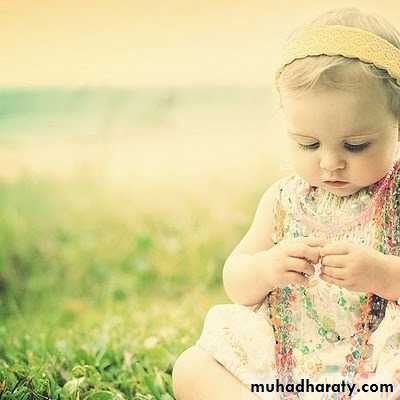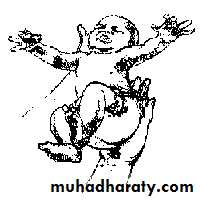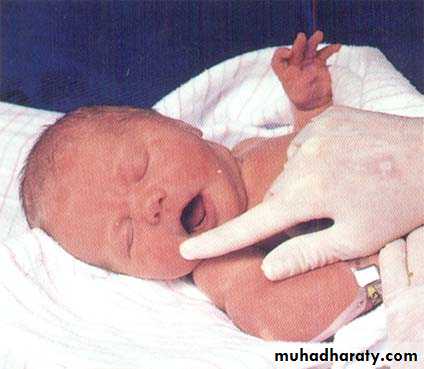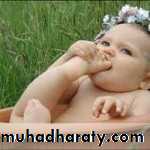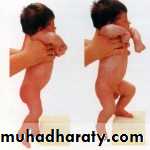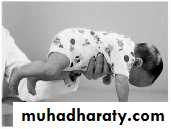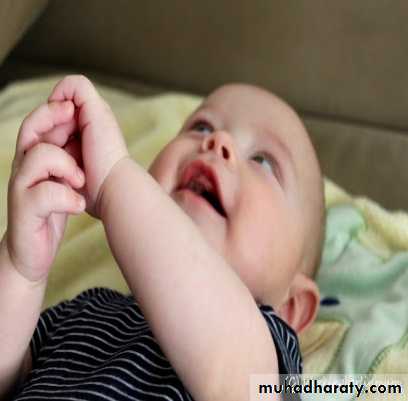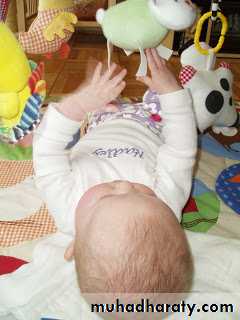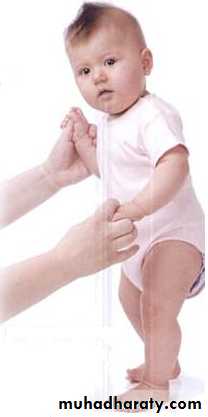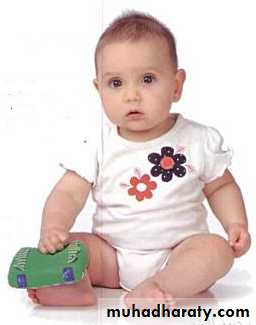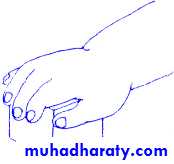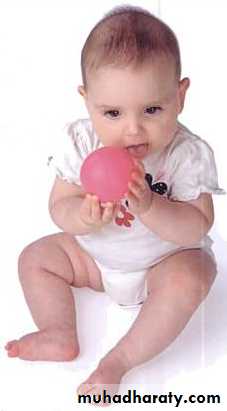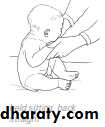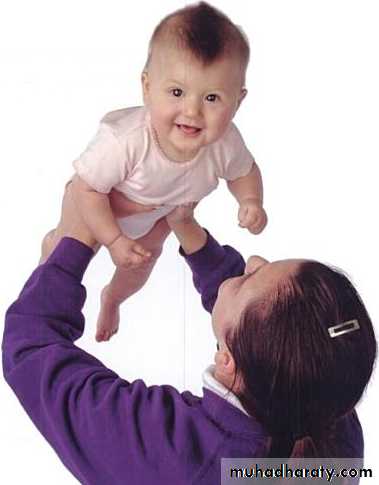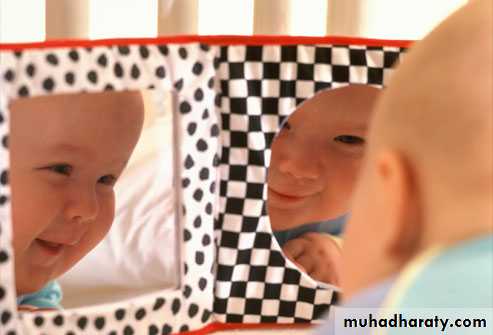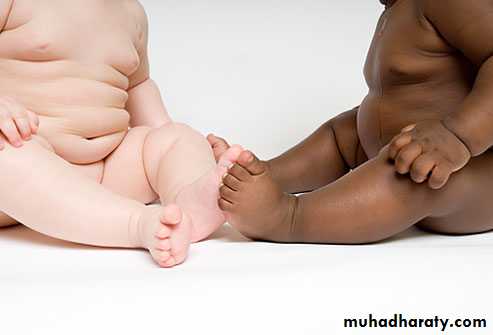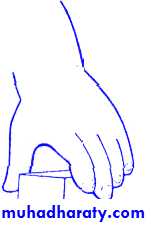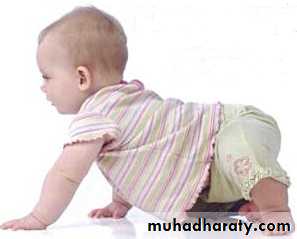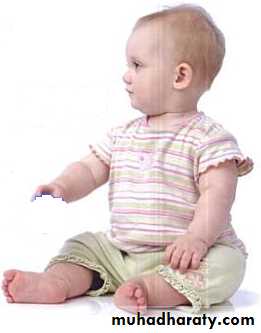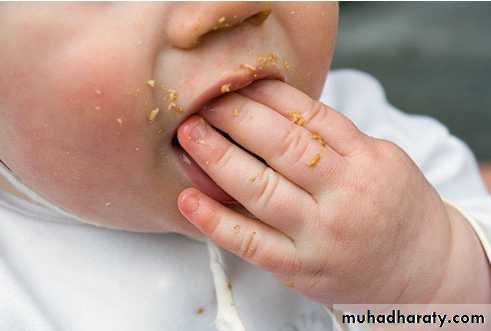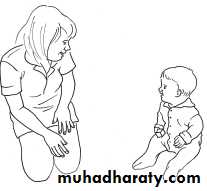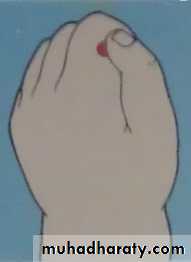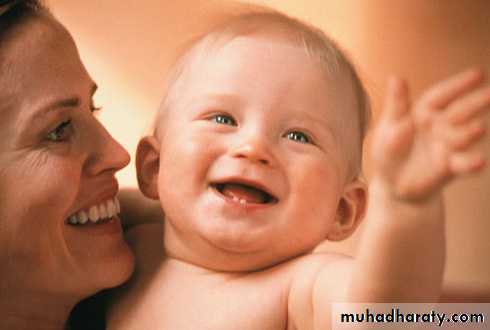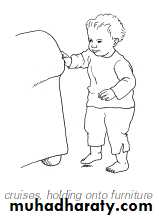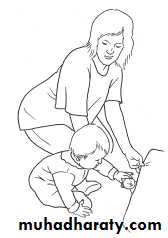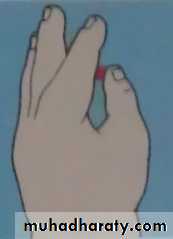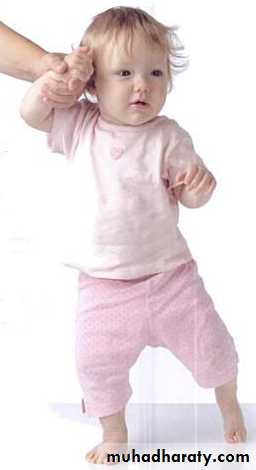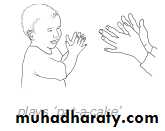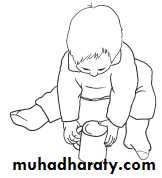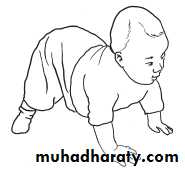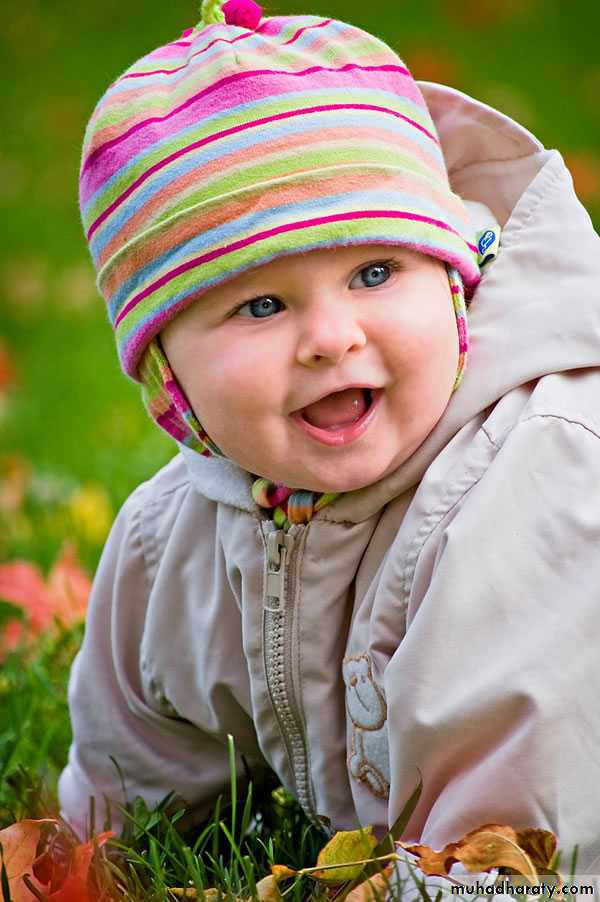By
Dr. Athal Luqman Humo
2015
Normal Development
Development :
Is an increase in function of processes related to body and mind. The individual level of functioning is determined by both genetics and environmental factors.2
There are 4 areas for developmental assessment:
Gross motor.Fine motor and vision
Speech, language & hearing
Social, emotional, behavior
Speech: production of intelligible sounds.
Language: underlying mental action of speech.
3
NEWBORN PERIOD
Primitive neonatal reflexes are unique in the newborn period, a consequence of the continued development of the CNS after birth.Any asymmetry, increase, or decrease in tone elicited by passive movement may indicate a significant CNS abnormality and requires further evaluation.
Similarly a delay in the expected disappearance of the reflexes may warrant an evaluation of the CNS.
4
The most important reflexes to assess during the newborn period are as follows:
The Moro reflex is elicited by allowing the infant's head gently to move back suddenly (from a few inches off the crib mattress). This results in abduction and upward movement of the arms followed by adduction and flexion. The Moro reflex disappears by 4 to 6 months.The rooting reflex is elicited by touching the corner of the infant's mouth, resulting in the lowering of the lower lip on the same side with tongue movement toward the stimulus. The face may turn to the stimulus. The rooting reflex disappears at 4 to 6 months.
The sucking reflex occurs with almost any object placed in the newborn's mouth. The infant responds with vigorous sucking. The sucking reflex is replaced later by voluntary sucking only.
5
The glabelar reflex occur when pressing the forehead of a baby with a finger elicits the closing of the eyes.
The palmar grasp reflex occurs when placing an object, such as a finger, onto the infant's palm. The infant responds by flexing fingers. The palmar grasp usually disappears by 3 to 4 months.
The plantar grasp reflex: when you rub your finger against the sole of your baby’s foot, the response is that his little toes begin to curl around your finger. The plantar grasp usually disappears by 6 to 8 months.
The asymmetric tonic neck reflex is elicited by placing the infant supine and turning the head to the side. This placement results in ipsilateral extension of the arm and the leg into a "fencing" position. The contralateral side flexes as well. This reflex disappears by 2 to 3 months of age.
6
Trunk incurvation reflex: stroke back along one side of the vertebral column will cause the infant to move hips toward the stimulated side.
Placing: the infant withdraws his foot when it touches a flat surface.
Stepping: hold him up and let his feet touch the ground, observe that he displays stepping movements alternately.7
• Lies in flexed attitude; turns head from side to side; head sags on ventral suspension & lags on pulling to sit
• Gross motor
Hand fisting & May fixate face on light in line of vision; “doll's-eye” movement of eyes on turning of the body• Fine motor & vision
• Startles in response to loud sounds & cries
Hearing & speech• Visual preference for human face
• social
Emerging Patterns of Behavior During the 1st Year of Life:
Neonate (1
st
4 wk)
8
Legs more extended; holds chin up; head lifted momentarily to plane of body on ventral suspension, head lags when pulled to sitting position
• Gross motor
• No fisting; follow an object 90-180 degrees
• Fine motor & vision• Coosing
• Hearing & speech• Beginning to smile, gaze attentively at the adult’s face when being fed
• social
At 1-2 month
9
Lifts head and chest with arms extended in prone position; head above plane of body on ventral suspension, early head control with bobbing motion; back rounded.
• Gross motor
• reaches toward and misses objects; waves at toy, fixate & follow 180°.• Fine motor & vision
• Quietens to mother voice, turn to sound, says “aah, ngah
• Hearing & speech• Sustained social contact; listens to music
• SocialAt 3
month
10
No head lag when pulled to sitting position, Lifts head and chest, with head in approximately vertical axis; legs extended.
• Gross motor
hands in midline; reaches and grasps objects and play with own hand.
• Fine motor & visionLaughs out loud
• Hearing & speech• may show displeasure if social contact is broken; excited at sight of food
• SocialAt
4
month
11
Rolls over; legs bear most of body weight
& bounces actively on standing, on prone position lift chest & head supporting on their arms & hands• Gross motor
Transfers objects from hand to hand; graspuses one hand approach ( palmar grasp), grasp foot with their hands
• Fine motor & vision
Babbling (single/double syllables)
• Hearing & speech
• Enjoys mirror; takes every thing to mouth( mouthing), delighting with active play.
• SocialAt
6
month
12
Sits briefly, with support of pelvis
• Gross motortransfers objects from hand to hand; grasp uses radial palm
• Fine motor & vision
Forms polysyllabic vowel sounds
• Hearing & speech
Prefers mother
• Social
At
7
month
13
Sits steady on hard surface & crawls or creeps
• Gross motorScissor grasp with thumb & fingers
• Fine motor & vision
Eagerly attentive to everyday sounds, particularly voice, Imitates playful vocal and other sounds.
• Hearing & speech
Holds, bites and chews a small piece of food. Puts hands on breast or around bottle or cup when drinking.
• Social
At
8
month
14
Sits up alone and indefinitely without support, with back straight, “cruises” or walks holding on to furniture
• Gross motor
• Grasps objects with thumb and forefinger
picks up pellet with assisted pincer movement; releases object grasped by other person, uncovers hidden toy
• Fine motor & vision
• Repetitive consonant sounds (“mama,” “dada”)
• Hearing & speech
plays peek-a-boo; waves bye-bye
• Social
At
10
month
15
Walks with one hand held ; rises independently, takes several steps, bear-walks around floor.
• Gross motor
Picks up pellet with unassisted pincer movement of forefinger and thumb; releases object to other person on request or gesture
• Fine motor & vision
Says a few words besides “mama,” “dada”, responds to own name.
• Hearing & speech
Plays simple ball game; makes postural adjustment to dressing, drinks well from cup with little assistance.
• Social
At
12
month
16
THANKS
17


